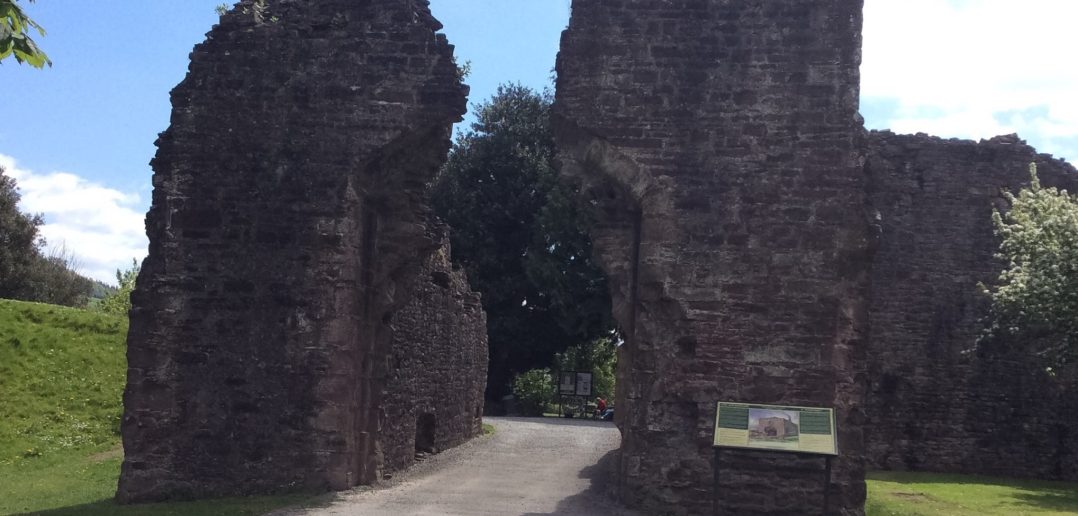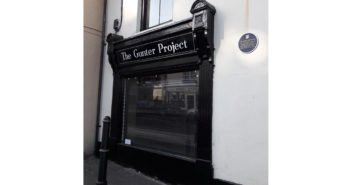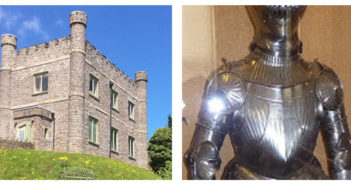At Christmas, 1175, William de Braose invited the former owner of the castle and his long-time rival, Seisyll ap Dyfnwal, his son Geoffrey and other leading chieftains to his Castle in Abergavenny as a supposed act of reconciliation and then murdered them in the Great Hall. This massacre is famous – and infamous – as the guests were presumably looking forward to their harmonious stay with sumptuous food when they entered the gates and then laid down their weapons according to custom.
To ask what they might have eaten may seem rather like posing the question: “And what did you think of the play, Mrs Lincoln?” but it is an interesting matter. It is not easy to answer with specific reference to that year, of course, but I have done my best, with my mouth watering somewhat heartlessly as I did so. It was a long time ago!
Later in Medieval times, Chaucer said of his rich-living and vow-breaking Monk: “A fat swan loved he best of any roost” and we know that the Prioress, also described in the General Prologue to The Canterbury Tales, fed even her dogs on “roosted flesh” and “wastrel breed” (best grade of wheat bread) and had such good table manners that she never left a trace of grease on her cup when she had drunk from it. Neither did she wet her fingers in the sauce or let a drop fall onto her breast. The assumption is that others did!
The Franklin changed his dinners according to the season of the year, choosing from partridge, bream and pike, kept in his pond and served with piquant sauces. For breakfast he dipped a cake in wine and his house was never without baked meats of fish and animal. The Cook boiled chickens with marrow bones and used tart flavouring powder from sweet cypress root. He could roast, boil, broil and fry, bake pies and make excellent stews particularly with capon. This gives us some clues to accepted habits which were probably prevalent in the twelfth century also. If roasts were commonplace amongst the middle classes, those aristocratic Abergavenny banquets must have been special, particularly at Christmas.
In his fascinating book, The Time Traveller’s Guide to Medieval England, Ian Mortimer describes in detail a typical feast in the household of a nobleman. The dinner will last for about two hours: there are several courses and the guest is not expected to finish a dish. The first courses is boiled and baked meats in sauces, a pottage containing chicken or pork, stewed pheasant or swan, “Leche Lombard” which is a composite and complex concoction boiled in a bladder like a haggis and venison with a wine and flavoured sauce.
In the intermission after this there is a serving of fruit and nuts, perhaps merely to gaze on and there may be a pie into which, once it is baked, live birds are placed so that they fly out and sing: those four and twenty blackbirds. Now comes the roast flesh, exotic meats delicately carved to show off the lord’s bounty: venison, fawn, kid, baby rabbit, bustard, stork, crane, peacock, heron, partridge, woodcock, plover, egret and larks. Each of these has to be sliced in its own special way: for example a mallard is “unbraced” and this by the light shed by rushes and the fires.
The third course consists of the smallest creatures: curlew, sparrows and martinets. Baked fruits are served with these: quinces, damsons in wine and compotes. Some fruits are eaten before the meal but pears, nuts, strawberries, whinberries, spiced baked apples and pears come afterwards. Cheese is next and a spiced red wine, hypocras, washes it down. Throughout, vegetables are not served independently but in sauces to accompany the meats: cauliflower, peascods, borage, fennel, hyssop and maybe parsnips and celery. The chief diners eat the finest wheat bread but the stable boys, who are allowed into the hall at Christmas, get brown rye bread or stale “cocket”, a round white loaf. The lord can produce a wide range of wines such as Rhenish, Gascon or Spanish vintages and it was poured in generous quantities.
It is small wonder that death by a surfeit was not uncommon – but at least that was voluntary! The violence that was the Abergavenny Castle massacre may have been unusual in breaking all the bonds between host and guest but in other ways was typical of the brutality of the period. The banquets I have described represent an oasis of peace and brotherhood in a turbulent period.




